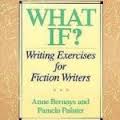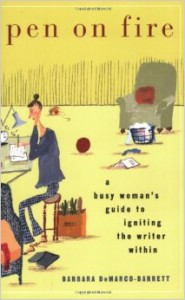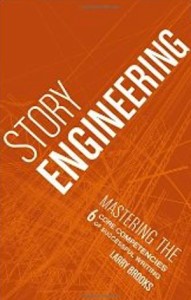Continuing to look at resources I use along this writing journey, this list looks at some of my favorite books.
“I think all teachings about writing are good. Wonderful, in fact. Taken as a whole, the oeuvre of writing wisdom out there is intimidating in both its sheer mass and its inherent lack of focus. There are so many views on so many of the variables that conspire to comprise the creative writing process, as well as define the end product, that in the end the writer must decide what works for her and what doesn’t.” — Larry Brooks in Story Engineering
There are so many books on writing, and like most writers I have read a lot of them. Reading about writing makes you feel like you’re being productive without having to, you know, actually write. It’s like researching; you feel like you’re doing something. But the reality is that it doesn’t help your word count.
We love reading about how other writers write. Their rituals, quirks, talismans. Because we convince ourselves that if we could just find the right routine, location, or beverage, then writing would be effortless and we would stop wrestling so much. The irony is that the only thing that will help us learn how we write effectively is to actually write. Stop reading about it and start actually doing it.
However, that being said, there are a lot of good writing books out there. Although I have only read a small percentage of what is out there, here are a few I keep coming back to:
The Artist’s Way, by Julia Cameron. I first picked up this book years ago (before God got me) and honestly I thought it was utter nonsense. It had a few good ideas about creativity, but I just could not get past this whole God as creator stuff. I got rid of it quickly. Years later, I came across it again, and oh what a difference a life of faith can have. It was like scales had fallen from my eyes. The same God who delighted in making over 350,000 species of beetles shares my joy in the creative process. He wants me to succeed; he is invested in my creativity.
Way, by Julia Cameron. I first picked up this book years ago (before God got me) and honestly I thought it was utter nonsense. It had a few good ideas about creativity, but I just could not get past this whole God as creator stuff. I got rid of it quickly. Years later, I came across it again, and oh what a difference a life of faith can have. It was like scales had fallen from my eyes. The same God who delighted in making over 350,000 species of beetles shares my joy in the creative process. He wants me to succeed; he is invested in my creativity.
My copy of this book is now dog-eared and highlighted. Whenever I am feeling stuck or lost either with my writing or with life in general I come back to morning pages. They help get me unstuck. I have read most of her other books and found them helpful, particularly Walking in the World, because I have found there to be a link between writing and walking. If you haven’t read her work, you should. Unless, of course, you will be offended by the idea of linking your creativity with the Creator. Then skip it.
What If? W riting Exercises for Fiction Writers, by Anne Bernays and Pamela Painter. This book has a special place in my heart because it was the book we used during my first writing class that I took at The Writer’s Center in Bethesda, MD. I learned a lot from it and still go back to it occasionally for ideas or writing prompts.
riting Exercises for Fiction Writers, by Anne Bernays and Pamela Painter. This book has a special place in my heart because it was the book we used during my first writing class that I took at The Writer’s Center in Bethesda, MD. I learned a lot from it and still go back to it occasionally for ideas or writing prompts.
Pen on Fir e: A busy woman’s guide to igniting the writer within, by Barbara DeMarco-Barrett. I picked this book up on a whim one day at the book store because how could a stay-at-home mom with young children and the yearning to write resist such a title or cover? With sections entitled “Tools & Rituals”, “Overcoming the Obstacles” and “Living the Life”, this book gave me concrete ideas and loads of inspiration. The chapters are short, easily digested, and each one ends with a “set your timer” exercise to try. They were perfect for nap time or the occasional free hour.
e: A busy woman’s guide to igniting the writer within, by Barbara DeMarco-Barrett. I picked this book up on a whim one day at the book store because how could a stay-at-home mom with young children and the yearning to write resist such a title or cover? With sections entitled “Tools & Rituals”, “Overcoming the Obstacles” and “Living the Life”, this book gave me concrete ideas and loads of inspiration. The chapters are short, easily digested, and each one ends with a “set your timer” exercise to try. They were perfect for nap time or the occasional free hour.
 Bird by Bird by Anne Lamott. This book is a classic for a reason. So much inspiration given with Lamott’s witty, spunky style (the same style that helped get me through the early months of parenting a high-need infant with her book Operating Instructions). I tend to keep this book out on the table with all my writing stuff. I’ll open it to a random page and read a few paragraphs before I get started just to remind myself that my struggles are universal and worthwhile. I recommend rereading this book once a year.
Bird by Bird by Anne Lamott. This book is a classic for a reason. So much inspiration given with Lamott’s witty, spunky style (the same style that helped get me through the early months of parenting a high-need infant with her book Operating Instructions). I tend to keep this book out on the table with all my writing stuff. I’ll open it to a random page and read a few paragraphs before I get started just to remind myself that my struggles are universal and worthwhile. I recommend rereading this book once a year.
A quick look at this list shows me that what I’ve looked for inspiration rather than craft. On the plotter vs. pantser scale, I have been firmly on the pantser side (writing “by the seat of my pants”). Using free writes to understand my characters, I have opted for the organic method of writing, simply using my detailed chronology to provide structure and winging it from there. When I explained the plotter/pantser dichotomy to my husband, he laughed and said that the pantser side fit my structure-eschewing personality to a T.
But a recent struggle with my story has caused me to re-think this tactic. I have spent the past week reading Story Engineering by Larry Brooks and, as much as a large part of me does not want to admit this, I think it has answered structure questions that I did not even know I had, but have been struggling with. Exactly as he said I would. I hate it when other people are right.
Once I got (get?) over my initial reluctance, I could appreciate how this idea of structure can help me. In fact, I got excited at the idea of looking at my plot points in terms of the story architecture. I could almost see the color coded index cards creating themselves. I hope that I can take these lessons and use them to get me over the next hump of the writing process.
Next on my to-be-read pile, Take off your Pants, by Libbie Hawker. This could be dangerous…….


























